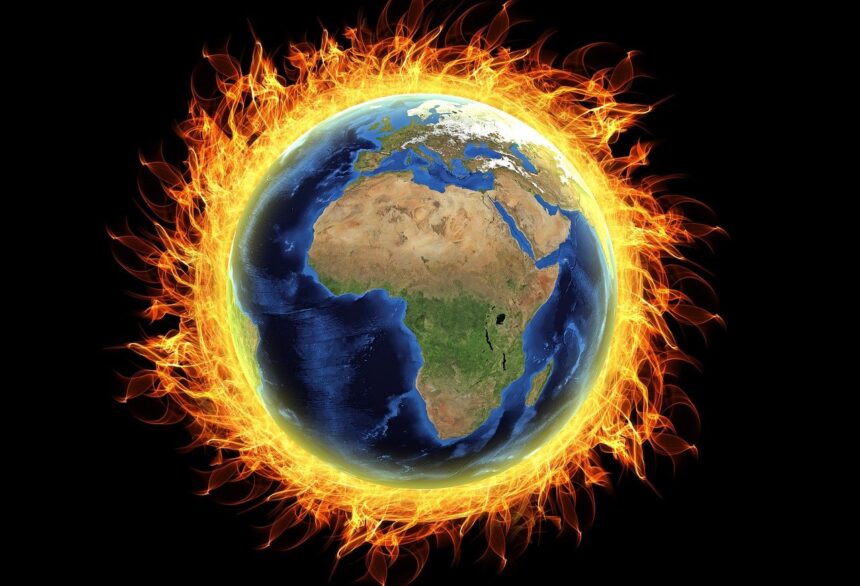Global warming is a topic of concern that has emerged as a significant issue in recent years. This phenomenon, which involves the increase in Earth’s average temperature, has far-reaching consequences. Not only does it alter our climate, but it also disrupts ecological balance, impacts agricultural patterns, and poses a threat to biodiversity.
An Overview of Global Warming
Global warming refers to the long-term rise in the average temperature of the Earth’s climate system. This warming trend has been in progress for centuries, but its pace has significantly amplified in the past hundred years, predominantly due to anthropogenic activities. The most prominent among these activities is the burning of fossil fuels, which has led to an increase in the concentration of greenhouse gases in the Earth’s atmosphere.
The Greenhouse Effect And Global Warming
The greenhouse effect is a natural process that warms the Earth’s surface. When the Sun’s energy reaches the Earth’s atmosphere, some of it is reflected back to space and the rest is absorbed and re-radiated by greenhouse gases. These gases, which include water vapor, carbon dioxide, and methane, trap heat in the atmosphere, thereby warming it.
This process is essential for life as it helps to maintain the Earth’s temperature. However, the problem arises when the greenhouse effect is intensified by human activities, such as the burning of fossil fuels and deforestation, leading to an increase in the Earth’s temperature, a phenomenon known as global warming.
Causes of Global Warming
The primary cause of global warming is the increase in greenhouse gases in the Earth’s atmosphere. Human activities, notably the burning of fossil fuels like coal, oil, and gas, and deforestation, are the main sources of these gases.
Carbon Dioxide (CO2)
Carbon dioxide is the most significant greenhouse gas and comes from burning fossil fuels, such as coal and oil. It is responsible for around three-quarters of the warming impact on our climate.
Methane
Methane is another potent greenhouse gas. Although it makes up only about 16 percent of global emissions, it is 25 times more effective than carbon dioxide at trapping heat in the atmosphere. Major sources of methane include agriculture (especially livestock), oil and gas production, and waste from homes and businesses.
Nitrous Oxide
Nitrous oxide is a powerful greenhouse gas with a warming potential almost 300 times that of carbon dioxide. It is released during agricultural and industrial activities, as well as during combustion of fossil fuels and biomass.
Industrial Processes
Industrial processes also contribute significantly to global warming. For instance, factories and power plants release large amounts of carbon dioxide and other greenhouse gases during their operations.
Impact of Global Warming
Global warming has far-reaching effects on the planet. These impacts not only include rising temperatures but also severe alterations in weather patterns, sea levels, and living organisms’ habitats.
Rising Temperatures
One of the most direct effects of global warming is the increase in the planet’s average temperature. As a result, many regions are experiencing more extreme heat waves, and cold weather events are becoming less frequent and less severe.
Changes in Precipitation Patterns
Warmer temperatures cause more evaporation, leading to a more humid atmosphere. This can result in changes in precipitation patterns, causing some regions to become wetter while others become drier.
Sea Level Rise
Global warming is causing glaciers and polar ice caps to melt, leading to a rise in sea levels. This can result in flooding and coastal erosion, threatening coastal communities.
Impact on Wildlife
Global warming also impacts wildlife. Many species are being forced to move to new habitats due to changing temperatures, leading to shifts in the distribution of species around the world.
Global Warming and Climate Change
While the terms “global warming” and “climate change” are often used interchangeably, they refer to different phenomena. Global warming refers to the long-term increase in Earth’s average temperature, while climate change refers to changes in weather patterns over time, including changes in temperature, precipitation, wind patterns, and other aspects of the Earth’s climate system.
Climate change can result from both natural factors and human activities. However, the current trend of rapid climate change is mainly driven by human activities, particularly those that increase concentrations of greenhouse gases in the atmosphere, such as the burning of fossil fuels and deforestation.
Dealing with Global Warming
Addressing global warming requires both mitigation (reducing the flow of greenhouse gases into the atmosphere) and adaptation (learning to live with, and adapt to, the climate change that has already been set in motion).
Mitigation
Mitigation strategies include reducing demand for energy, enhancing energy efficiency, increasing the supply of renewable and other low-emission energy sources, preserving and enhancing sinks and reservoirs of greenhouse gases, reducing non-energy greenhouse gas emissions, and implementing carbon capture and storage.
Adaptation
Adaptation strategies can help deal with the effects of global warming that are already apparent and expected in the future. These strategies include water conservation, changes in agricultural practices, redesign of buildings, and development of new technologies.


